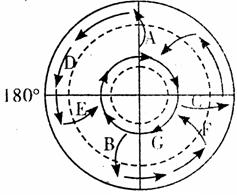Standard English is the variety of English which is usually used in print and which is normally taught in schools and to non-native speakers learning the language. It is also the variety which is normally (1) by educated people and used in news broadcasts and other (2) situations. The difference between standard and nonstandard, it should be noted, has (3) in principle to do with differences between formal and colloquial (4) ; standard English has colloquial as well as formal variants.
(5) , the standard variety of English is based on the London (6) of English that developed after the Norman Conquest resulted in the removal of the Court from Winchester to London. This dialect became the one (7) by the educated, and it was developed and promoted (8) a model, or norm, for wider and wider segments of society. It was also the (9) that was carried overseas, but not one unaffected by such export. Today, (10) English is arranged to the extent that tile grammar and vocabulary of English are (11) the same everywhere in the world where English is used; (12) among local standards is really quite minor, (13) the Singapore, South Africa, and Irish varieties are really very (14) different from one another so far as grammar and vocabulary are (15) .Indeed, Standard English is so powerful that it exerts a tremendous (16) on all local varieties, to the extent that many of long-established dialects of England have (17) much of their vigor and there is considerable pressure on them to be (18) . This latter situation is not unique (19) English: it is also true in other countries where processes of standardization are (20) .But it sometimes creates problems for speakers who try to strike some kind of compromise between local norms and national, even supranational ones.
20()
A. in the way
B. under way
C. out of the way
D. all the way
参考答案:B
解析:
此题属于语意搭配题。under way表示“在进行中”,例如:We have several projects under way.根据原文意思,标准化进程正在实行的过程中,故选项[B]under way正确。选项[A]in the way表示“挡道的,妨碍人的”,例如:If you’re going to help,at least don’t get in the way.选项[C]out of the way表示“不挡道的,得到解决的”,例如:While the fight was going on,he tried to keep out of the way.选项 [D]all the way表示“一直地,完全地”,例如:I ran all the way to the office.另外与way连用的常见短语有:by the way(顺便地);find one’s way(设法到达);in a way(在某种程度上);in no way(决不);make way(让路);one way or another(用某种方法);give way(让步,屈服);on the way out(即将过时的);see one’s clear way to do/doing sth.(愿意做某事)。
全句可译为:后者的情况不仅仅涉及英语。在别的一些正在进行语言标准化的国家也存在这种情况。


 是
是